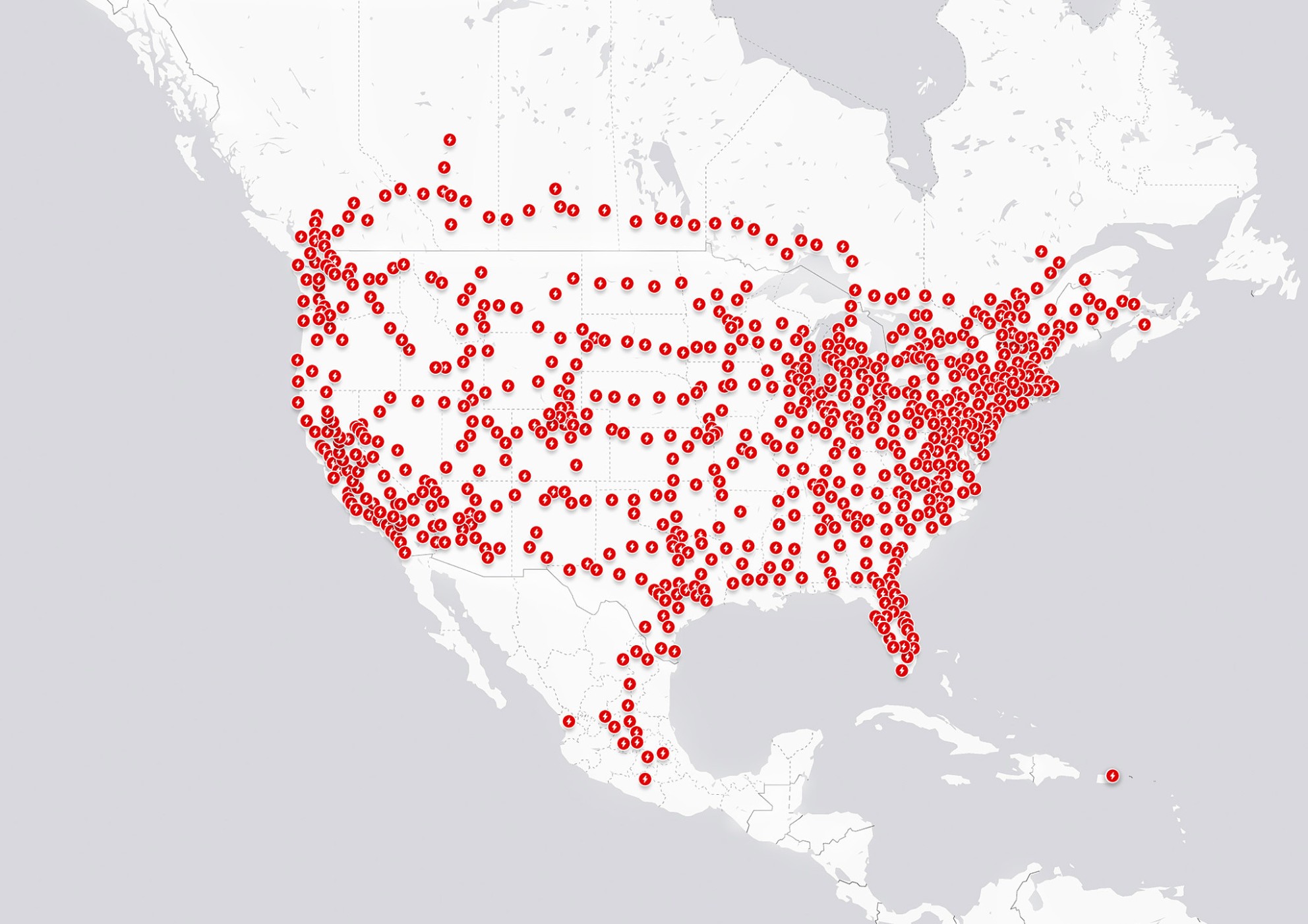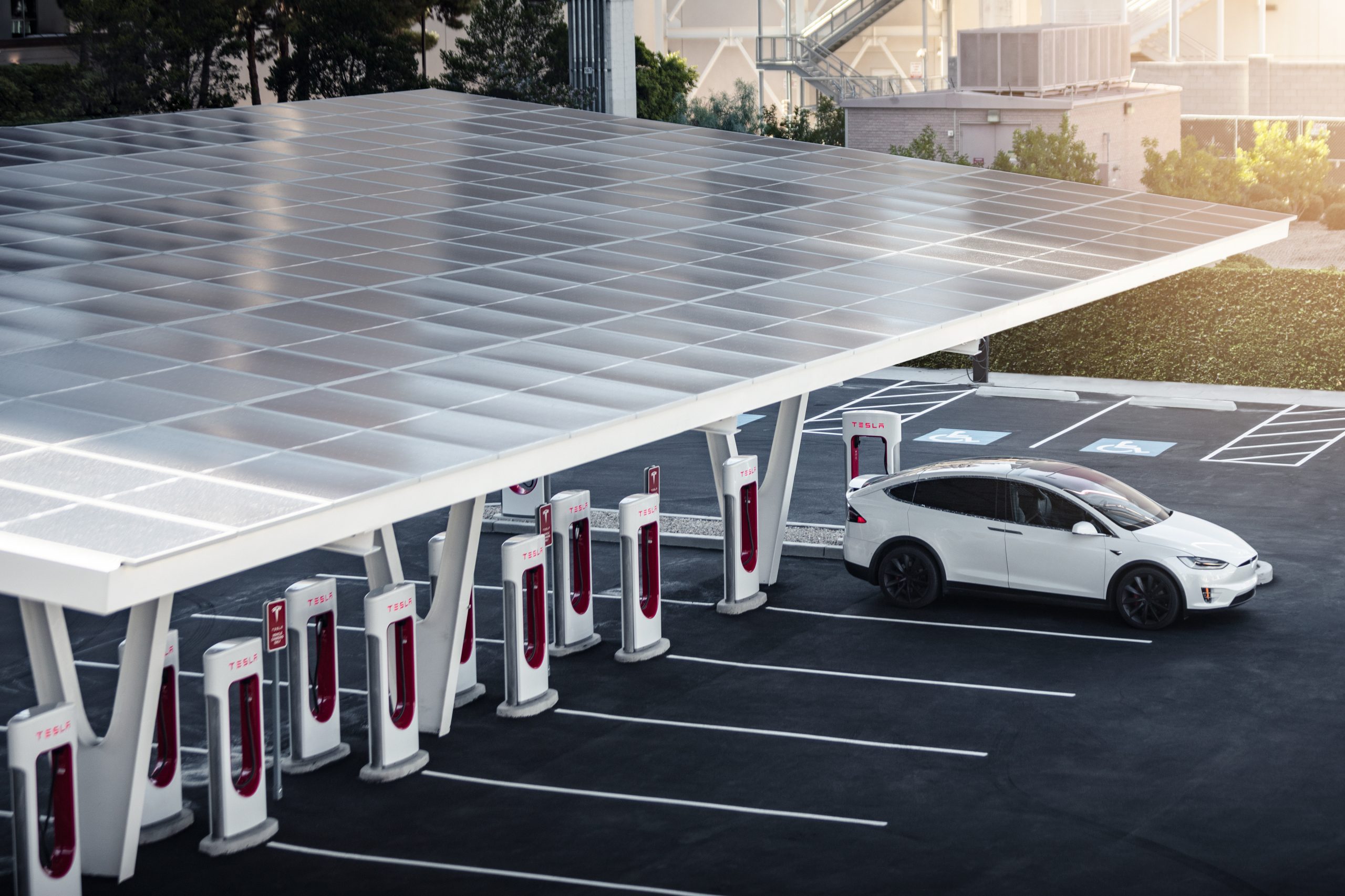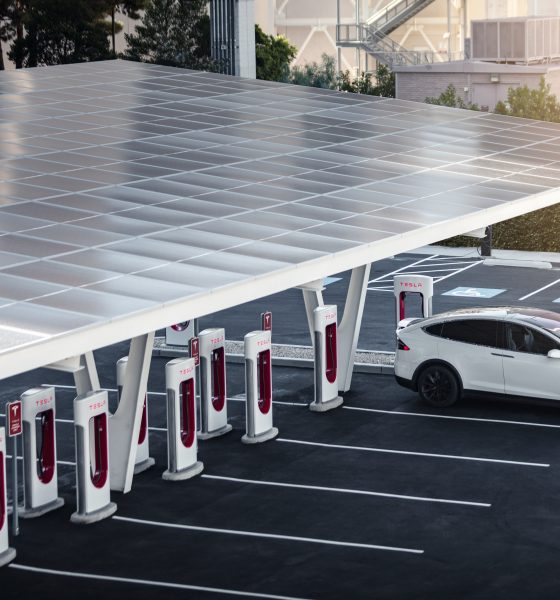Tesla announced this morning that it would open some of its United States Supercharger Network to competitors in an effort to not only make some of the $7.5 billion in funds from the Bipartisan Infrastructure Law available to the automaker, but also to make EV charging more available to consumers.
Tesla officially confirmed this morning that it would open select Superchargers in the U.S. to all EVs, an unprecedented move in the company’s history. In the past, Tesla has offered an exclusive strength to its owners by offering an expansive, robust, and dependable EV charging network. It has been arguably one of Tesla’s biggest advantages, and since CEO Elon Musk said in 2021 that the Supercharging Network would be opened to competitors that year, the automaker has reluctantly moved toward that goal.
EV charging to receive $7.5 billion in Bipartisan Infrastructure Deal: White House
Now, it has finally come to fruition.
This morning, The White House confirmed the plan with further details, stating:
“Tesla, for the first time, will open a portion of its U.S. Supercharger and Destination Charger network to non-Tesla EVs, making at least 7,500 chargers available for all EVs by the end of 2024. The open chargers will be distributed across the United States. They will include at least 3,500 new and existing 250 kW Superchargers along highway corridors to expand freedom of travel for all EVs, and Level 2 Destination Charging at locations like hotels and restaurants in urban and rural locations. All EV drivers will be able to access these stations using the Tesla app or website. Additionally, Tesla will more than double its full nationwide network of Superchargers, manufactured in Buffalo, New York.”
Last week, it was confirmed that Musk’s late January meeting with White House staff dealt with the potential opening of the Supercharger Network. Unsurprisingly, some Tesla fans were not super pleased with the idea. Superchargers are already relatively crowded, and the admittance of other non-Tesla brands to these chargers would only make matters worse. However, this is not always the case, as Superchargers in some areas of rural America, where EVs have yet to make a significant impact on the overall automotive market, are not always completely occupied.
While the locations that Tesla will choose are still up in the air, at least 7,500 piles of the U.S. Supercharger Network will be open to all EVs, and this is a win-win for everyone. Why?
Tesla owners will still have a distinct advantage
While 7,500 of the Superchargers will be open to other manufacturers by the end of next year, Tesla owners will still be the only ones to have the ability to utilize all of them.
This freedom gives prospective EV owners the ability to have a wide variety of options in terms of which company they will purchase from. However, Tesla will still have a significant advantage because it is the only manufacturer that will allow unlimited access to any Supercharger in the United States. It is important to emphasize this fact, because while other manufacturers will have access to some of the network, only Tesla owners will have access to all of it.
It eliminates a lot of the “There is not enough charging” argument
Even in 2023, as EVs continue to grab a more significant share of the total U.S. automotive market, we still hear that there are not enough chargers to justify an EV purchase.
While home charging is an option, those who rent or are apart of a strict Home Owners Association (HOA) may not have the ability to charge at their residence. This requires more public charging options to be available to those people, and the expansion of the charging network through Tesla’s decision to open select locations to all EVs only makes this outdated argument a lot less valid.
Even still, there are plenty of other companies out there that support the other manufactuers. Electrify America, ChargePoint, Blink, EVgo, and many others help electric vehicle owners get a charge before their drives.
Tesla’s decision shows its commitment to its mission
Tesla has always maintained that its goal is to “accelerate the transition to sustainable energy.” While the company is a business, and a for-profit business at that, Tesla has disrupted the entire automotive sector by showing EV options are sometimes more ideal than others. Because of the company’s influence on consumers, legacy automakers have been working on EVs for several years, and an influx of startups have come to light, hoping to be the next big thing.
Credit: Tesla
If Tesla was not actually committed to pushing more companies to build EVs, it likely would not make this move. As previously stated, many prospective car buyers are still under the impression that EVs are not feasible because of a lack of charging options. However, Tesla’s move to work toward expanding the Superchargers to other companies is further proof that it is more concerned with putting more EVs on the road, even if they’re not Teslas, than hoarding its robust charging infrastructure to itself.
This move is completely and entirely based on Tesla’s push to bring EVs to the mainstream, as if they were not already. However, the move is a further committment to the mentality that any EV is better than a combustion engine, and whatever the company can do to help another EV of any kind get sold is more than acceptable. But, don’t be fooled, Tesla still will take necessary steps to make its EVs more appealing than others, and that is evident with its continuous and relentless development of its vehicles, making them better and better as time goes on.
I’d love to hear from you! If you have any comments, concerns, or questions, please email me at joey@teslarati.com. You can also reach me on Twitter @KlenderJoey, or if you have news tips, you can email us at tips@teslarati.com.

Elon Musk
Elon Musk’s xAI closes upsized $20B Series E funding round
xAI announced the investment round in a post on its official website.

xAI has closed an upsized $20 billion Series E funding round, exceeding the initial $15 billion target to fuel rapid infrastructure scaling and AI product development.
xAI announced the investment round in a post on its official website.
A $20 billion Series E round
As noted by the artificial intelligence startup in its post, the Series E funding round attracted a diverse group of investors, including Valor Equity Partners, Stepstone Group, Fidelity Management & Research Company, Qatar Investment Authority, MGX, and Baron Capital Group, among others.
Strategic partners NVIDIA and Cisco Investments also continued support for building the world’s largest GPU clusters.
As xAI stated, “This financing will accelerate our world-leading infrastructure buildout, enable the rapid development and deployment of transformative AI products reaching billions of users, and fuel groundbreaking research advancing xAI’s core mission: Understanding the Universe.”
xAI’s core mission
Th Series E funding builds on xAI’s previous rounds, powering Grok advancements and massive compute expansions like the Memphis supercluster. The upsized demand reflects growing recognition of xAI’s potential in frontier AI.
xAI also highlighted several of its breakthroughs in 2025, from the buildout of Colossus I and II, which ended with over 1 million H100 GPU equivalents, and the rollout of the Grok 4 Series, Grok Voice, and Grok Imagine, among others. The company also confirmed that work is already underway to train the flagship large language model’s next iteration, Grok 5.
“Looking ahead, Grok 5 is currently in training, and we are focused on launching innovative new consumer and enterprise products that harness the power of Grok, Colossus, and 𝕏 to transform how we live, work, and play,” xAI wrote.
Investor's Corner
Tesla gets price target bump, citing growing lead in self-driving

Tesla (NASDAQ: TSLA) stock received a price target update from Pierre Ferragu of Wall Street firm New Street Research, citing the company’s growing lead in self-driving and autonomy.
On Tuesday, Ferragu bumped his price target from $520 to $600, stating that the consensus from the Consumer Electronics Show in Las Vegas was that Tesla’s lead in autonomy has been sustained, is growing, and sits at a multiple-year lead over its competitors.
CES 2026 validates Tesla’s FSD strategy, but there’s a big lag for rivals: analyst
“The signal from Vegas is loud and clear,” the analyst writes. “The industry isn’t catching up to Tesla; it is actively validating Tesla’s strategy…just with a 12-year lag.”
The note shows that the company’s prowess in vehicle autonomy is being solidified by lagging competitors that claim to have the best method. The only problem is that Tesla’s Vision-based approach, which it adopted back in 2022 with the Model 3 and Model Y initially, has been proven to be more effective than competitors’ approach, which utilizes other technology, such as LiDAR and sensors.
Currently, Tesla shares are sitting at around $433, as the company’s stock price closed at $432.96 on Tuesday afternoon.
Ferragu’s consensus on Tesla shares echoes that of other Wall Street analysts who are bullish on the company’s stock and position within the AI, autonomy, and robotics sector.
Dan Ives of Wedbush wrote in a note in mid-December that he anticipates Tesla having a massive 2026, and could reach a $3 trillion valuation this year, especially with the “AI chapter” taking hold of the narrative at the company.
Ives also said that the big step in the right direction for Tesla will be initiating production of the Cybercab, as well as expanding on the Robotaxi program through the next 12 months:
“…as full-scale volume production begins with the autonomous and robotics roadmap…The company has started to test the all-important Cybercab in Austin over the past few weeks, which is an incremental step towards launching in 2026 with important volume production of Cybercabs starting in April/May, which remains the golden goose in unlocking TSLA’s AI valuation.”
Tesla analyst breaks down delivery report: ‘A step in the right direction’
Tesla has transitioned from an automaker to a full-fledged AI company, and its Robotaxi and Cybercab programs, fueled by the Full Self-Driving suite, are leading the charge moving forward. In 2026, there are major goals the company has outlined. The first is removing Safety Drivers from vehicles in Austin, Texas, one of the areas where it operates a ride-hailing service within the U.S.
Ultimately, Tesla will aim to launch a Level 5 autonomy suite to the public in the coming years.
Elon Musk
Elon Musk’s Biggest Revelations on AI, Robots, and the Future of Work from the Moonshots Podcast

Elon Musk’s appearance on the Moonshots with Peter Diamandis podcast was packed with bold predictions, candid admissions, and surprising tech insights. The nearly three-hour conversation covered everything from artificial intelligence to humanoid robots, geopolitics, and the future of work. Here are the top 10 most intriguing takeaways:
-
Aggressive AGI Timeline Predictions
Musk offered a detailed view on when artificial general intelligence (AGI) could emerge, suggesting it may arrive sooner than many expect, emphasizing both transformative potential and risks.
-
U.S. vs. China in the AI Race
He discussed the strategic competition between the United States and China over AI development, noting that geopolitical dynamics will shape how and who leads in the next decades.
-
Future of Job Markets
Musk touched on how AI and automation could reshape employment, predicting massive boosts in productivity alongside potential disruptions in traditional work structures.
-
Clean Energy Transition
A recurring theme was the role of clean energy in future economies, with Musk reiterating the importance of scaling sustainable power generation and storage.
-
Humanoid Robots Are Coming
On the podcast, Musk elaborated on Tesla’s work on humanoid robots, hinting at timelines and applications that go beyond factories to general-purpose assistance.
-
Tesla Roadster “Last Human-Driven Car”
Outside the core discussion topics, Musk teased features of the upcoming Tesla Roadster — calling it “the best of the last of the human-driven cars” and suggesting safety won’t be its main selling point.
-
The Role of AI in Clean Energy and Robotics
Linking AI to both energy optimization and robotics, Musk explained how smarter systems could accelerate decarbonization and task automation across industries.
-
U.S. Innovation Leadership
Musk argued that maintaining American leadership in key tech sectors like AI, space, and robotics should be a national priority, with thoughtful policy and investment.
-
Job Creation vs. Job Elimination
While acknowledging automation’s disruptive effects, he also outlined scenarios where new industries and opportunities could emerge, particularly in AI, space, and advanced manufacturing.
-
Long-Term Vision for Humanity
Throughout the conversation, Musk revisited his long-term philosophical views — including a belief in humanity’s responsibility to become a multi-planetary and technologically empowered species.
Whether you agree with Musk’s optimism or not, the podcast offers a window into the thinking of one of the most influential figures in tech today, in and why his visions continue to spark debate and inspiration.










